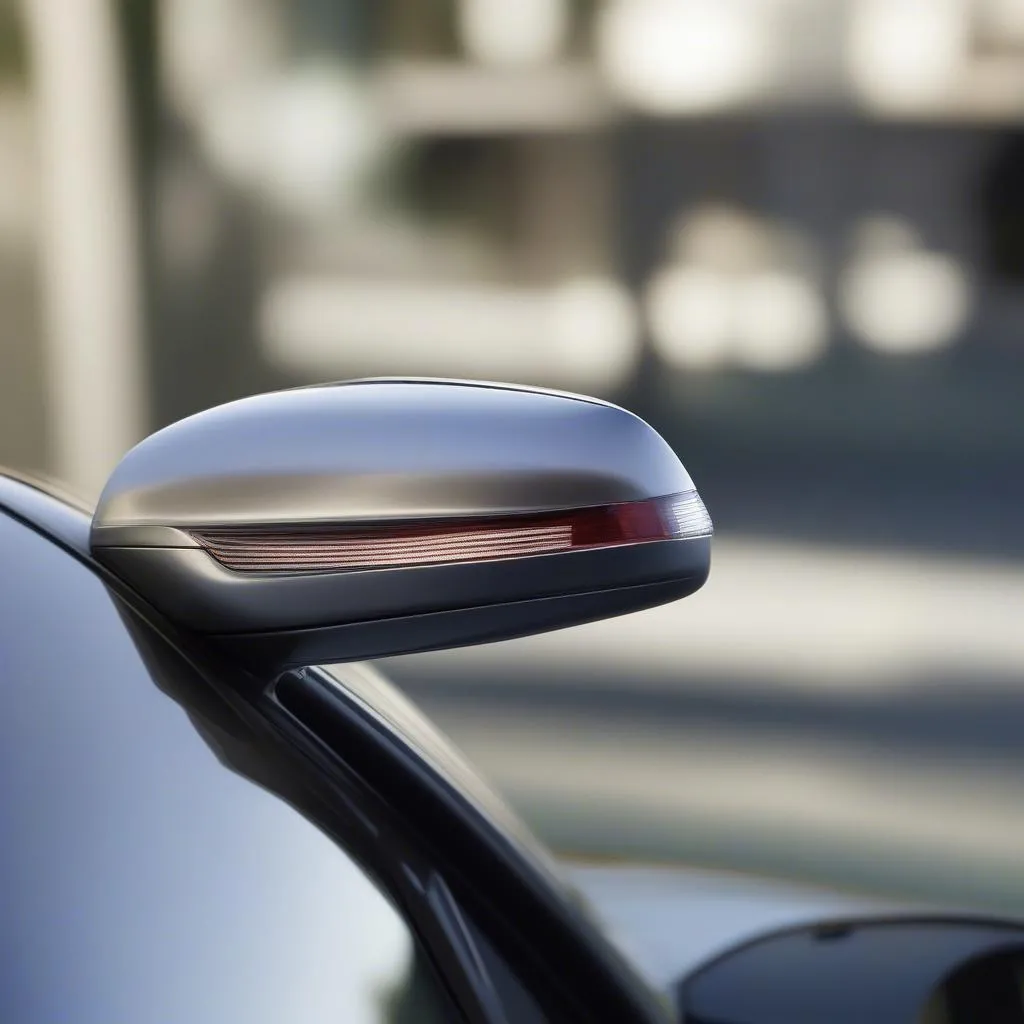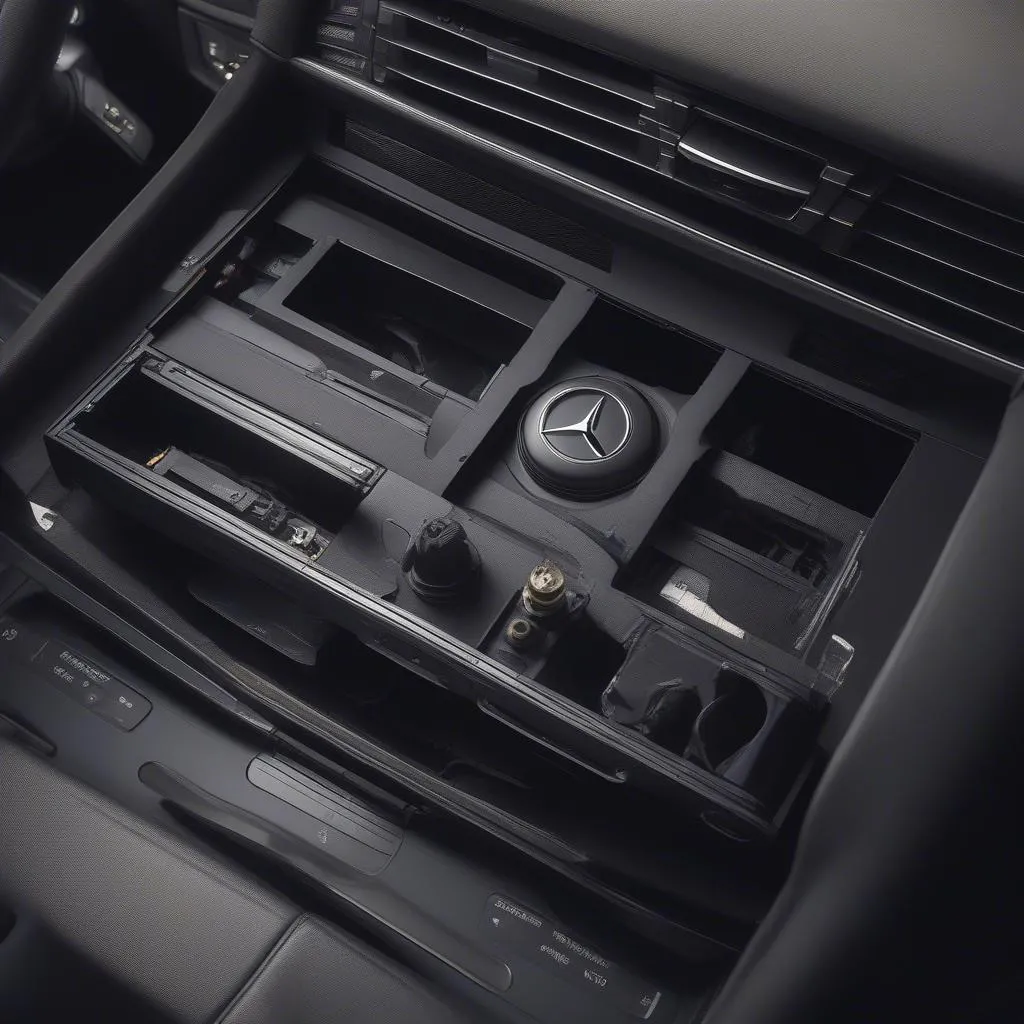Owning a 1994 Mercedes E320 is a testament to classic automotive engineering. However, even the most reliable vehicles can throw a curveball. When your E320 starts talking through warning lights, understanding its diagnostic codes is crucial. These codes act like your car’s own language, signaling potential issues that need attention. This article will guide you through understanding these codes, what they mean, and how to address them.
Demystifying Diagnostic Trouble Codes (DTCs)
Before delving into the specifics, let’s clarify what we mean by “1994 Mercedes E320 diagnostic codes.” These are formally known as Diagnostic Trouble Codes (DTCs). These alphanumeric codes are stored in your car’s onboard computer, the Engine Control Unit (ECU), and are triggered when a sensor detects an anomaly in the engine, transmission, or other critical systems.
“Think of DTCs as your car’s way of saying, ‘Hey, something isn’t right here,'” explains automotive expert Robert Hernandez, author of “Automotive Diagnostics Simplified.” “Ignoring these codes is like dismissing a doctor’s diagnosis – you might be facing a minor hiccup or a potentially major problem.”
1994-mercedes-e320-dashboard-warning-lights|Mercedes E320 Dashboard Warning Lights|A close-up photo of a 1994 Mercedes E320 dashboard illuminated with multiple warning lights, including the check engine light, ABS light, and airbag light.
Common 1994 E320 Diagnostic Codes and Their Meanings
Here are some frequently encountered codes in a 1994 Mercedes E320:
- Code: P0170
- Meaning: Fuel Trim Malfunction (Bank 1)
- Potential Causes: Vacuum leaks, faulty oxygen sensors, fuel pressure issues
- Code: P0300
- Meaning: Random/Multiple Cylinder Misfire Detected
- Potential Causes: Worn spark plugs, faulty ignition coils, vacuum leaks
- Code: P0400
- Meaning: Exhaust Gas Recirculation (EGR) Flow Malfunction
- Potential Causes: Clogged EGR valve, faulty EGR solenoid
- Code: P0120
- Meaning: Throttle Position Sensor/Switch ‘A’ Circuit Malfunction
- Potential Causes: Faulty throttle position sensor, wiring issues
Note: This is not an exhaustive list. The specific codes stored in your E320’s ECU can vary depending on the nature of the problem.
1994-mercedes-e320-engine-bay-diagnostic-port|Mercedes E320 Engine Bay Diagnostic Port|A photo of the open engine bay of a 1994 Mercedes E320 with a hand pointing to the diagnostic port.
How to Retrieve Diagnostic Codes on Your 1994 E320
Unlike modern vehicles with OBD-II ports, accessing diagnostic codes on a 1994 E320 requires a slightly different approach. You have two primary options:
- DIY Method: This involves using a specific jumper wire to connect designated pins within the diagnostic port located under the hood. Once connected, the Check Engine Light will flash a sequence of codes. However, this method can be tricky to interpret without a code chart.
- Professional Diagnostic Tool: Using a specialized diagnostic scanner designed for Mercedes-Benz vehicles is the most reliable method. These tools provide a clear readout of all stored codes and their descriptions, making diagnosis more straightforward.
For those seeking reliable and user-friendly diagnostic tools, Cardiagtech offers a range of options compatible with Mercedes-Benz vehicles. Visit their website to explore their product line.
Addressing Diagnostic Codes: A Word of Caution
While this article provides a glimpse into understanding 1994 Mercedes E320 diagnostic codes, it’s crucial to remember that self-diagnosis has its limitations.
“Attempting complex repairs without proper knowledge and experience can lead to further damage and costly repairs down the line,” cautions Hernandez. “When in doubt, consult a qualified Mercedes-Benz mechanic.”
Frequently Asked Questions
Q: Can I drive my E320 with the Check Engine Light on?
A: While you might be able to drive for a short period, it’s not advisable. Ignoring the warning light can potentially worsen the underlying issue.
Q: Will disconnecting the battery reset the codes?
A: Temporarily disconnecting the battery might clear the codes, but they will reappear if the problem persists.
Q: Are all diagnostic codes serious?
A: Not necessarily. Some codes might indicate minor issues, while others signal potentially major problems.
Conclusion
Understanding your 1994 Mercedes E320’s diagnostic codes empowers you to address potential issues proactively. While some codes might be simple fixes, others require professional attention. For those seeking reliable diagnostic tools and information, CARDIAGTECH offers a range of resources. Remember, a well-maintained E320 is a joy to drive, and addressing diagnostic codes promptly ensures a smooth and enjoyable ownership experience.


